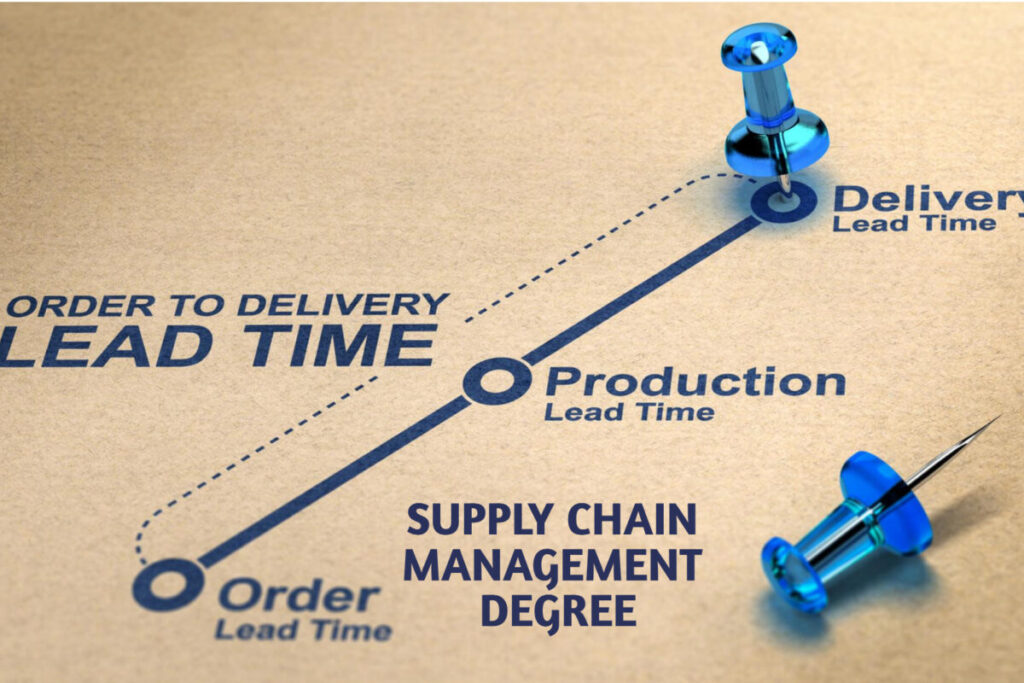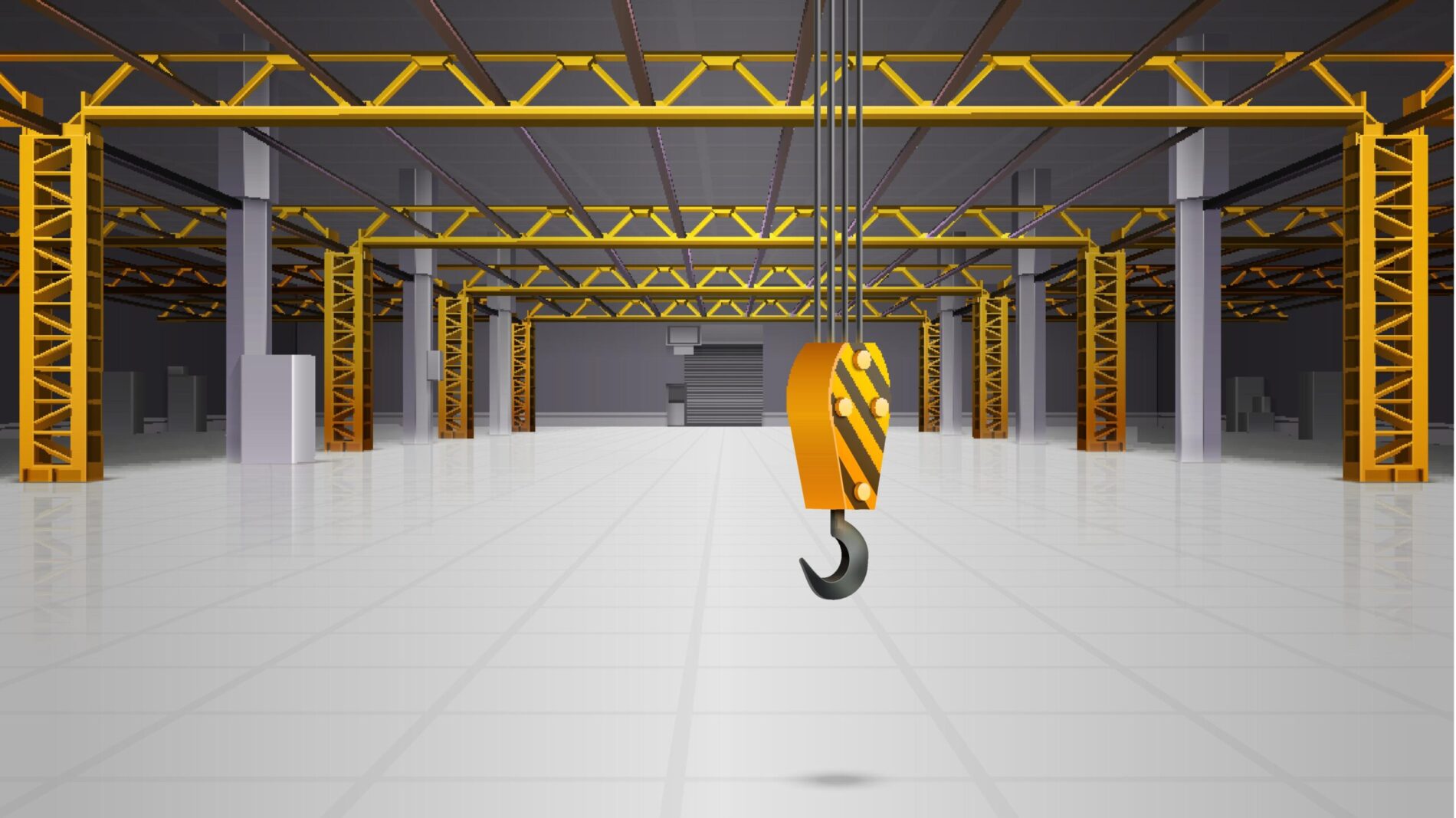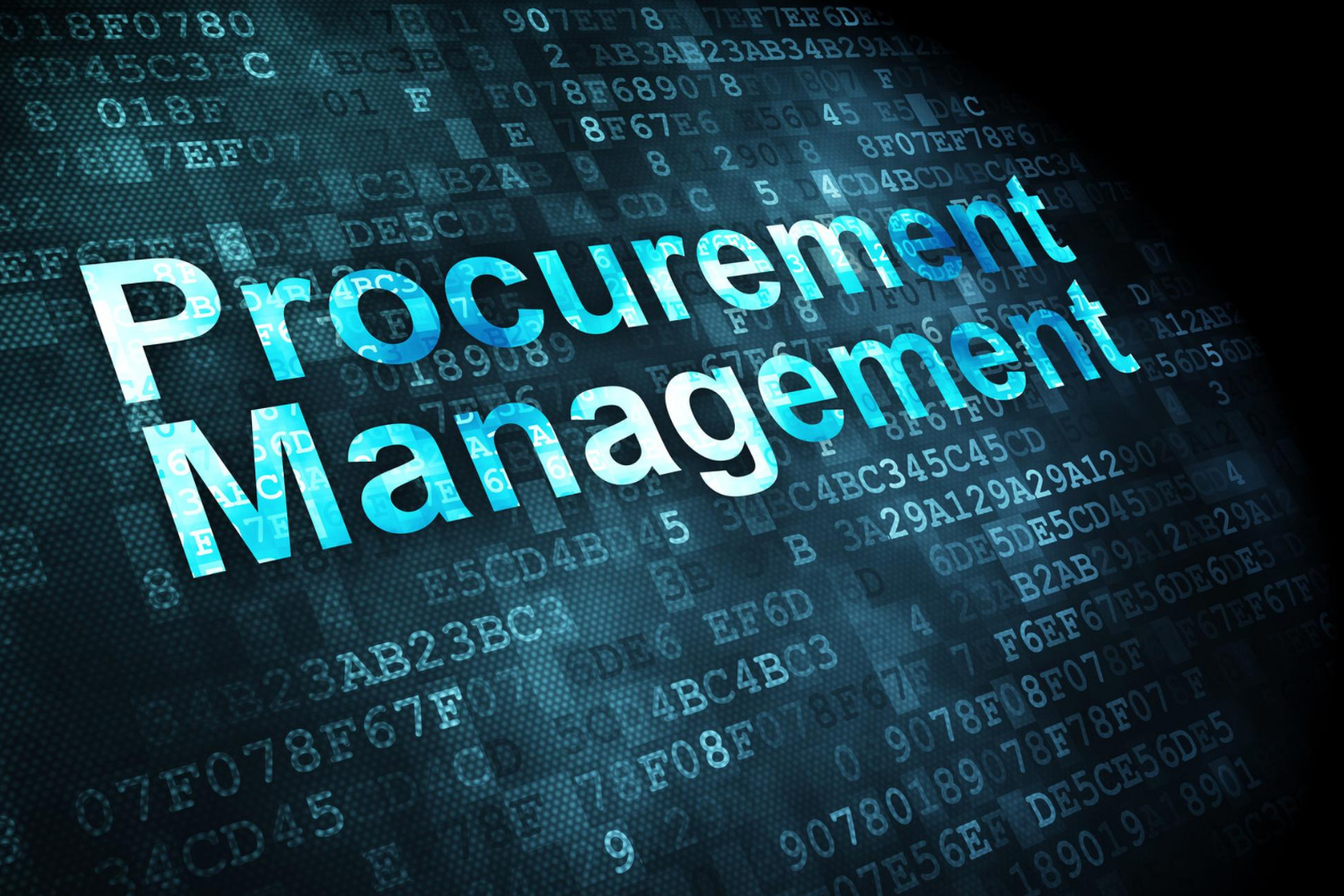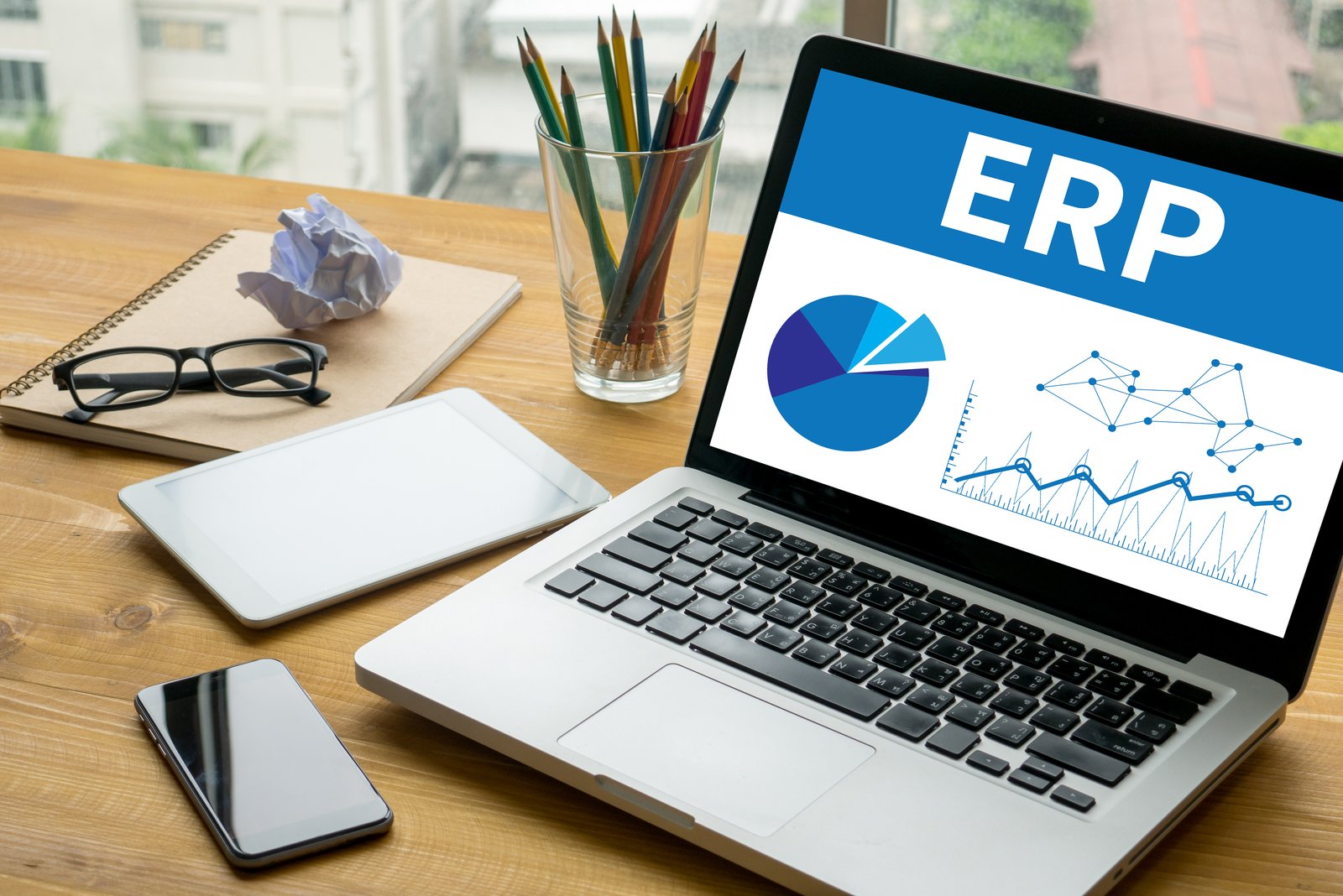For Professionals, By Professionals, Learn Supply Chain Management From The Industry Leaders
Supply Chain Management may seem like a corporate term that would not relate to small business owners. However, any business that is developing products, from coffee to car engines, can benefit from having Supply Chain Management best practices in place.
Don’t miss one single article
Join our email list to receive new podcast in your inbox
Latest Articles
Predictive Analytics Want to pursue a career in the supply chain, logistics, or procurement? You must of necessity also pursue and attain a relevant supply chain management degree or logistics degree. These…Predictive Analytics 101 : How It Helps You Achieve Your Business Goal
SUPPLY CHAIN MANAGEMENT DEGREE| 6 basic area of true study
Demand planning- An effective supply chain management process that can help you meet your audience’s demands while keeping costs down. Supply chain management and inventory management are challenges for business,… Inventory management is a crucial component to supply chain management that ultimately helps you keep track of your physical goods. What Is Inventory Management? According to Investopedia, the inventory management… There is an essential necessity to use different types of warehouse equipment. Specially to lift heavy weight, to access narrow spaces, etc. Here is a brief list of tools &… Procurement management is an essential step in your supply chain, so it’s important to understand what it means, how far it reaches, and how to manage procurement while running a… The manufacturing supply chain controls the flow and coordination of goods provided through a company. In short, it takes raw materials and turns them into products that create net value…. Without shipping and logistics, supply chain management (SCM) in itself would not be able to do anything for businesses. That’s because shipping and logistics is supply chain management. With an… Read on to get enlightened on quality in supply chain management. In today’s economy of cut-throat market competition, businesses are innovating mechanisms to raise their products’ quality. For a business… It doesn’t matter what type of product or service a company is offering; there is always finance in supply chain management. Financial supply chain management (FSCM) isn’t just about looking… Warehousing in supply chain management has never been more important to business operations. As the primary source for getting products has become online shopping, no company can match consumer fulfillment… What it meant while asked “what is erp roleplay?? Supply chain management refers to handling materials, including the procurement, movement, and storage of raw materials. It is the management of…Demand Planning and Forecasting [4 Pillars & Actionable Guide]
Inventory Management: 14 endorsed Essential You Must Know
WAREHOUSE EQUIPMENT OVERVIEW: 10 FREQUENTLY USED TOOLS
Procurement Management :4 strong pillar | Scope | Cycle | Process
Manufacturing supply chain | 7 essential steps made easy
Navigating the Difference Between Shipping and Logistics: Optimizing Your Operations
Quality in Supply Chain Management | 1st & foremost
Financial Supply Chain| 7 fruitful & Actionable discussion
Warehousing In Supply Chain | 3 extremely important insights
What is ERP roleplay ? 5 agile & Actionable area explained
Featured article | fundamental of supply chain management
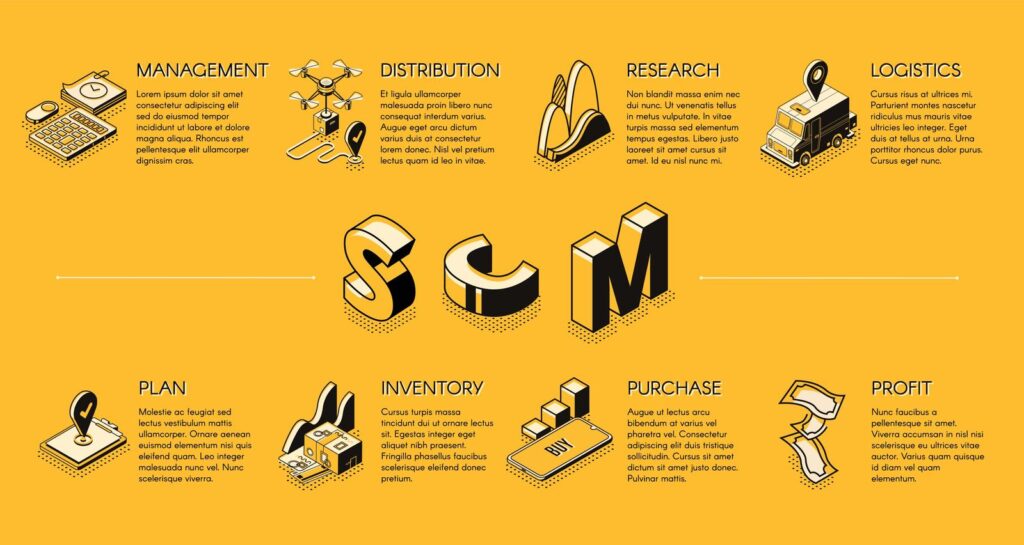
Effective Supply Chain Management will improve your business’s customer service by meeting customer and client expectations on deliveries and ensuring the right quantities and orders have been shipped.
Internally, Supply Chain Management helps lower purchasing and production costs, which will increase your bottom line. Here, we discuss the basics of Supply Chain Management and how you can implement an effective business strategy in your company.
What is Supply Chain Management?
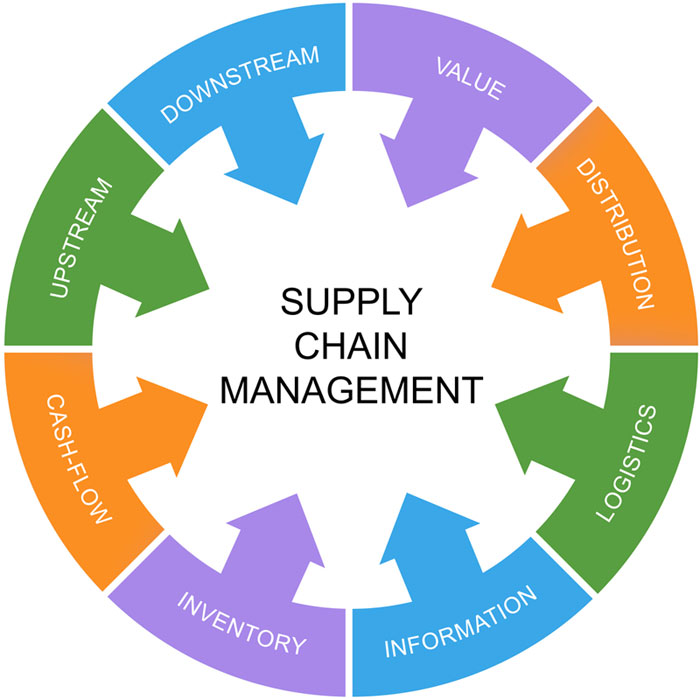
Supply Chain Management (SCM) is the oversight of the process goods and services take from raw materials to final products. This process streamlines a business’s supply chain activities to maximize customer value and achieve a competitive advantage in the marketplace.
The main goal of SCM is to develop and implement supply chains that are efficient and economical for the company. Supply chains oversee everything from product development to production to the information systems needed to coordinate these efforts.
Supply Chains
A supply chain is an interconnecting network of organizations, employees, activities, resources, and technologies working together to manufacture and sell a product or service. A supply chain typically starts with product development and ends with delivering a final product or service to the end customer.
Supply chain management evaluates each step in the supply chain process to determine cost savings and affect the bottom line.
Physical Flows
Physical flows are the most visible piece of the supply chain. They involve the movement, transformation, and storage of raw materials and goods. Physical flows represent the flow of products from suppliers to customers, facilities, and ultimately, the end-users.
Information Flows
Despite being less visible of an operation than physical flows, information flows are just as important. Information flows include the internal practices and coordination to control the everyday flow of raw materials and goods up and down the supply chain. Effective information flows also determine the long-term plans and establish processes to keep the supply chain moving.
History
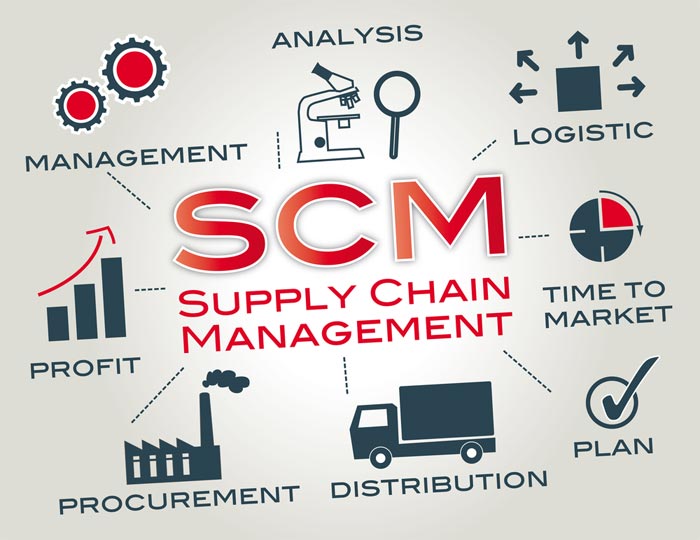
For the past 100 plus years, supply chain management has evolved from the simple idea of focusing on improving laborious production processes to the present day engineering and management of complex, global networks.
The roots of SCM began in the early 1900s when Frederick Winslow Taylor published The Principles of Scientific Management, which laid the foundation for supply chain management by providing research on improving manual loading processes and illustrating how you can engineer different tools to help with basic production and increase productivity.
By the 1940s, the importance of operations research became relevant when scientists showed the value of analytics when studying logistics issues in the military, specifically problems arising from World War II. This led to the separate fields of engineering and operations research merging to become Supply Chain Engineering.
Still, until the 1950s, the primary focus was on how to use pallet lifts and other machines to decrease intensive labor in material handling, and by the mid-1950s, this concept expanded to transportation management. Intermodal containers were developed and used to haul large cargoes on trains, trucks, and ships.
Much of these practices continued into the 1960s and 1970s, but by the 1980s, computers were becoming more widely used and began shifting perceptions of supply chain management. With personal computers came more readily available access to planners, flexible spreadsheets, and map-based interfaces, enabling businesses to start to use technology and automation to improve scheduling and deliveries and handle more complex logistics.
In 1985, the National Council of Physical Distribution Management was updated to become the Council of Logistics Management (CLM), which reflected the shift in integrating the flows of products relating to businesses instead of solely for military use.
A new software called Advanced Planning and Scheduling (APS) that further integrated logistics and supply chain components came about on the coattails of ERP software during the technology boom of the 1990s, which fueled the emergence of Enterprise Resource Planning (ERP Roleplay) systems as a follow up to the successes of Material Requirements Planning in the 1970s and 1980s.
Today, the term “supply chain” is used across most industries and encompasses a wide range of processes and technologies that further improve logistics and customer relationship management.
Why is Supply Chain Management Important?
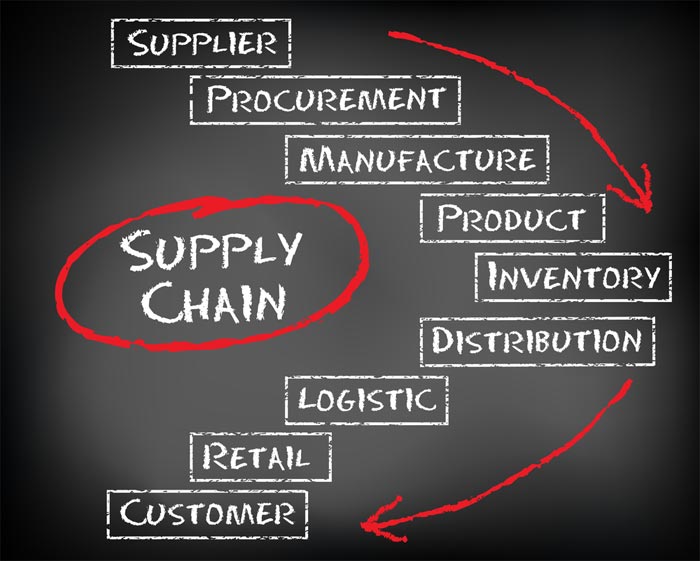
As mentioned earlier, properly executed supply chain practices can bolster a bottom line and improve customer relationships. However, there are many other benefits to developing supply chain management protocols with your business.
Customer Service
Customers expect their orders to be accurate and delivered on their schedule. Like manufacturing businesses, end customers may also have multiple locations, so it is crucial to ensure logistics management delivers the products to the correct address.
Operating Costs
Effective supply chains deliver products on time and prevent avoidable storage of costly raw materials. For example, delays in part deliveries can halt a warehouse’s production, costing them thousands of dollars per day.
Improve Bottom Line
Customers and businesses value supply chain managers because even saving cents on a product can add up to thousands or millions saved in distribution and final sales. Speeding up process flows also allows a business to invoice sooner, ensuring a steady cash flow.
Quality of Life
In extreme situations, managing global supply chains to deliver products sooner can help in providing disaster relief. During the current pandemic, supply chains prioritized personal protective equipment to hospitals and care providers as it became available, ensuring that medical professionals and those being exposed every day could have the protection they needed.
Effective supply chain management can also help solve our global energy crisis by reducing oil consumption and emissions. While there have been strides to decrease energy use, supply chain managers and engineers are still working to develop energy-efficient supply chains that consume fewer resources.
Supply Chain Management Basics

Supply Chain Management can be broken down into four main parts that improve productivity: integration, supply chain operations, purchasing, and distribution. Supply chain managers practice these core components through demand management, supply management, sales and operations planning, and product portfolio management.
Demand Management
Demand Management is another umbrella term that encompasses merchandise planning, customer demand planning, and trade promotion planning.
Merchandise planning is the approach to buying and selling with the intent to maximize your return on investment (ROI).
Demand planning is the process of forecasting demand for different products to meet inventory needs without having a surplus. Statistical forecasting and product portfolio management are processes that help ensure accuracy in demand planning.
Trade promotion planning creates a buzz or short-term demand for a product by offering value-added bonuses, no-obligation gifts, or other promotions, including special pricing and display fixtures.
Supply Management
Supply management controls products and inventory by establishing systems to streamline supply planning, inventory planning, production planning, capacity planning, and distribution planning.
Supply planning draws on information from demand planning to determine how to best balance supply and demand to meet financial goals and service objectives in the organization.
Inventory planning determines inventory quantities and timing that best align with production and sales needs.
Production planning is a complex piece of supply management that addresses a company’s production and manufacturing modules. Production planning looks at:
- Management and collaboration with suppliers
- Balancing supply and demand
- Production scheduling
Capacity planning looks at the staff and equipment needed in production to meet the customer’s product demand.
Distribution planning oversees the shipment of goods from a supplier to the customer or final point of sale. Distribution planning manages everything from warehousing to inventory to packaging to supply chain and logistics.
The Pillars of a Supply Chain
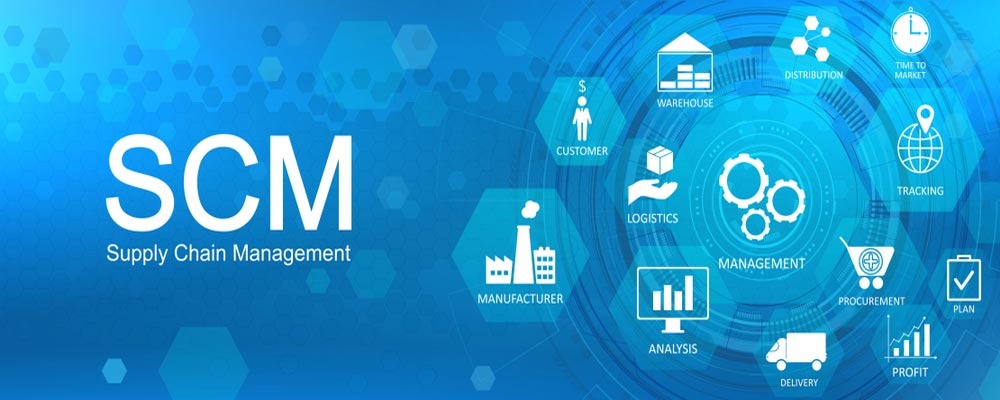
In today’s business world, the topic of supply chain management (SCM) is becoming more globalized. Any business—large or small—must implement best practices of supply chain management to succeed.
By definition, supply chain management is overseeing goods and services that go from raw materials to final products. This process causes an organization’s supply chain to be more consistent and efficient while maximizing customer value and gaining the upper hand in the world of trade.
The primary reason businesses should implement effective supply chain management is to institute and put into effect economic and well-organized supply chains for the company. From product development to final production, supply chains essentially govern the majority of how the businesses run.
Full of resources, organizations, activities, employees, and technologies, a supply chain is an interconnecting network that works together to produce and sell a service or product.
To address any questions surrounding the subject of SCM, we’ve analyzed the five key pillars of proper supply chain management and how they can prevent potential risks for the particular company.
Procurement & Sourcing
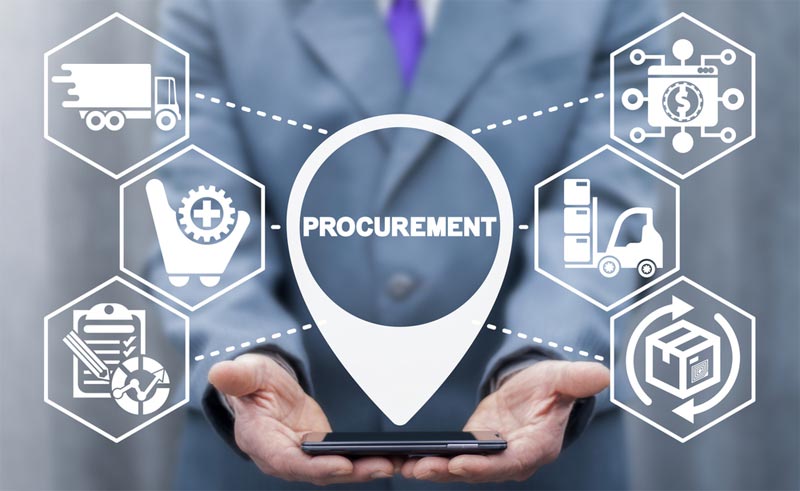
The procurement management process is the transforming of raw materials and goods or services a business requires to attain its business model. This entails performing inventory management, financing purchases, buying goods, and negotiating prices.
The goods a manufacturer needs require finding the best and most affordable suppliers, which brings in the process of sourcing. Sourcing includes market research, assurance of quality, negotiation, and scouting.
While they both work hand-in-hand, procurement and sourcing are just as important separately. Both disciplines require strong relationships with the suppliers of a manufacturer.
For instance, after sourcing has finished evaluating purchasing requirements, identifying integrating suppliers, and conducting market research, the team in charge of procurement works on financial planning, ordering, and reaching out to suppliers.
Shipping & Logistics

The second pillar of supply chain management is shipping and logistics. There are various complexities surrounding organization and transportation, and effective supply chain management takes this into account to plan a strategy.
Logistics is the organizational process of preparing, executing, and monitoring policies for the orderly and successful storage and movement of goods or products.
Business manufacturers must keep logistics and shipping associates who are flexible enough to adjust to unexpected changes in a competitive worldwide marketplace.
Unexpected changes entails reducing risk and expenditure, handling regulations, insurance, packaging, storage, and insurance. Managers of logistics are also responsible for choosing the manner of transportation for each aspect at every phase of the supply chain.
Production Planning

Out of all the steps of supply chain management, production planning is the more logical step.
In developing a production plan, a business tends to look at the overall picture rather than every item or product. Therefore, businesses speculate the level of manufacturing supply chain production with expected sales and other limitations and objectives of the company.
Establishing a solid production plan includes grouping products into individual categories. These categories are based on a products’ resource usage, design similarities, and manufacturing processes.
Cycle Time
To keep things simple, cycle time in supply chain management is the total time of the longest lead for every phase in the cycle. It corresponds to the sum of time required to complete a customer’s order if all category rankings in your supply chain are at zero.
Batch Production
Rather than manufacturing products in a continuous method, batch production is a manufacturing system where items are manufactured in individual groups or batches.
Instead of mass production, batch production is typically used for fulfilling a group of orders.
Batch production is used in situations where a large amount of personalized modifications are needed. Flow is used where the same item is manufactured in large quantities. In both of these circumstances, the system of batch production allows for adaptability.
This system allows some extent of customization while ensuring there’s higher productivity to meet clients’ needs. Cycle time also refers to the time between each continuous batch.
Machine Down Time
Downtime is the period when a machine or system is unavailable or not properly operating. Downtime most commonly refers to websites, equipment, or computer servers. It can happen due to unexpected changes or scheduled service repairs.
In most cases, a specified amount of uptime is provided by service level agreements.
Productivity
To ensure productivity, communication is vital. Make sure to constantly convey goals to your team clearly and concisely that explains management objectives and the necessary steps to reach those goals.
You can help with making essential changes according to the performance by scheduling frequent team meetings that focus on collective problem-solving.
This step ensures a combined understanding of productivity and the importance of enabling open discussions between management and employees.
Another one of many ways to increase team productivity and solidify higher standards is by developing procedure standards that reduce error within the supply chain. Reducing error aims to save time, which in turn saves money.
Emphasize the lowering of expected deviation in facilities management, receiving, shipping, quality control, and scheduling shifts.
Focusing on finding ways to continuously improve supply chain productivity also depends on which areas staff members focus their attention and time on.
If an employee raises an insignificant issue with shareholders and customers, don’t bother wasting time in that area.
Instead, focus your main performance indicators on some of the most important areas that determine the overall success of your company.
Incorporate an incentive plan into the supply chain. This step is crucial to creating an approach based on performance.
Join the workforce and culture of the supply chain by focusing on how workers and superiors can learn to refine their plans and implementation tactics.
Quality Assurance

Supply chain management has a direct impact on the quality of products and the profitability of a company. That is why quality assurance in the process of a supply chain is crucial for reducing operating costs and maintaining a competitive and economic advantage on the market.
Without the assurance of quality, defects and wasted materials become too frequent outside the range of control.
Inspections
If quality controls are functioning properly, inspections are unnecessary and can increase operating costs.
On the other hand, corporations that manufacture many defects often carry out hands-on inspections to make sure product quality is up to standard.
Routine audits and quality assurance methods of supplier relationships are vital to avoid unnecessary product inspections.
Toxic Materials
Throughout the world, company’s use various harmful materials in manufacturing, particularly in industries related to defense. Quality assurance ensures the protection of workers and staff from hazardous and toxic side effects.
The Department of U.S. Transportation outlines specific rules for the movement and handling of risky materials. Failing to comply with these guidelines can result in fines or penalties, making quality assurance all the more important.
Scrap and Defects
If a particular item is broken, torn, scratched, or deformed it can cause inefficiency in the whole product line and inflate defect numbers.
Additionally, low-quality products might necessitate more refining or construction, which consequently adds to the workload of workers and the cost of manufacturing.
Retailers and the products or raw materials they offer are examined by the staff members of a supply chain to make sure raw goods meet the specified expectations. By closely monitoring the quality of production data, supply chain managers protect the company’s reputation.
Failures on the Outside
If the quality of a supply chain quality is below standard, goods and services are more prone to breakage before the expiration of the warranty period. Once a product leaves the manufacturing warehouse, numerous failures can potentially happen (depending on the kind of business).
If a customer receives a damaged product, they can become less likely to respect the company. Controlling the quality within the supply chain system ultimately preserves the company’s status and reputation.
The more control one has over supplier details, the reduced possibility of returns and risky item failures.
Warehousing & Inventory Management

A warehouse in supply chain operates as a specified space for effectively storing and handling goods and other items.
Productive warehousing requires extensive planning, arranging, and moving of products and raw materials per how the company expects them to proceed through the supply chain.
When a new product arrives at the warehouse, supply chains must obtain details about where to place the goods as they pass through.
Sales and Operations Planning (S&OP)

Sales and Operations Planning (S&OP) is an integrated business management process that focuses on key supply chain drivers, like new product introduction, demand management, sales, marketing, inventory management, and production.
S&OP helps business leaders make better-informed strategic decisions by connecting plans and strategies across the company. Many organizations analyze S&OP monthly to ensure effective supply chain management that remains profitable.
Product Portfolio Management
Product portfolio management follows a product from its inception through its entire marketable life. While its introductory marketing may be what most think of, there must also be a plan in place for when a product is no longer profitable. Product portfolio management includes:
- Introducing new products
- Planning for when the product is no longer profitable
- Brand and platform planning
- Break-even analysis
- Cannibalization planning
Types of Supply Chain Management

Supply chain management (SCM) modules are broken down modules are broken down into six different categories that vary slightly but rely on the same fundamentals to coordinate the flow of products and services.
Continuous Flow Supply Chain Model
The continuous flow supply chain model is best for businesses in high demand situations with little variation. This model is typically adapted by companies in mature industries like paper, steel, cement, or commodities.
A well-designed continuous flow model can deliver consistent products with few variances and more reliable performance.
Fast Supply Chain Model
This model is best for businesses that manufacture and sell trendy products with a short lifecycle. The fast supply chain model suits you best if you are frequently changing products and you have to get them into the market quickly before the trend becomes irrelevant.
Efficient Supply Chain Model
The efficient supply chain model is ideal in companies that are in hyper-competitive markets and where end-to-end efficiency is the primary goal.
Custom-Configured Supply Chain Model
The custom-configured supply chain model looks at correlations between assets and total cost. This model also incorporates parts of the continuous flow model where the product is built before configuration and parts of the agile model for downstream processes.
Agile Supply Chain Model
Businesses that focus on specialty ordered items because it allows for flexibility in ramping up in some situations and remaining solid when there isn’t much movement occurring.
Flexible Supply Chain Model
The flexible supply chain model gives the business the power to meet demand during high peaks and overcome long periods of low volume and movement. This model can be easily switched on or off.
Supply Chain Process
The supply chain management process flows through five foundational building blocks that move a product from inception all the way to production and eventually to final sales.
- Strategic Planning - identifying core suppliers and define parameters for procurement
- Demand Planning - forecasting, lifecycle planning, promotional planning, and consensus demand planning
- Supply Planning - safety stock planning, outsourcing, supply network planning, supplier collaboration, customer collaboration, and distribution planning
- Procurement - purchase order (PO) processing, invoice verification, and receipt confirmation
- Manufacturing - production planning, detailed scheduling, manufacturing.
An Example of Supply Chain Management
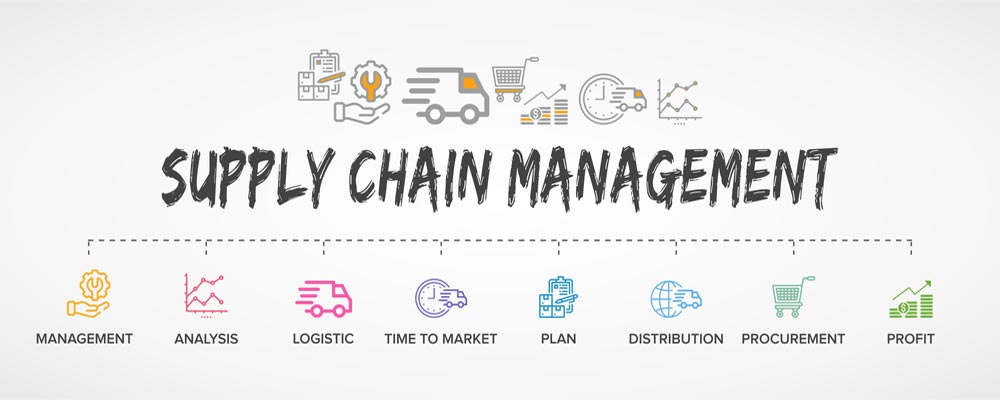
It is easiest to look at large businesses and corporations to find innovative and useful examples of the supply chain processes. These companies typically have multiple warehouses, offices, and distribution centers to get their product out to customers on a global scale.
H&M
Fashion retailer H&M is ranked as number 16 on Gartner’s Top 25 supply chain list for their innovative and effective supply chain management practices. H&M is known for its effective collaboration with its partners and, without having any factories of its own, works with over 700 partner companies to get its clothing and goods produced.
Because of all of its partnerships, H&M relies heavily on IT integration between its central office and production offices. By establishing an efficient IT communication infrastructure, H&M can conduct most communications electronically.
By implementing effective supply chain management (SCM) in their manufacturing, H&M has reduced their lead time by an average of 15-20%, allowing its stores to sell the product at competitive prices.
Frequently Asked Questions (FAQ’s)
Q: What is supply chain management (SCM)?
A: Supply chain management (SCM) is the management of the flow of goods and services from the point of origin to the point of consumption. It involves coordinating and managing all activities across the supply chain to ensure effective and efficient movement of products.
Q: What is the role of supply chain management?
A: The role of supply chain management is to optimize the entire process of managing the flow of goods and services. It includes sourcing, procurement, production, transportation, warehousing, and distribution to meet customer demands and achieve competitive advantage.
Q: What are the benefits of supply chain management?
A: Supply chain management provides several benefits, including improved customer satisfaction, reduced costs, increased profitability, shorter lead times, improved collaboration with supply chain partners, enhanced inventory management, and better risk management.
Q: Can you give an example of SCM?
A: One example of supply chain management is the movement of products from a manufacturer to a retailer. It involves sourcing raw materials, manufacturing products, transporting them to distribution centers, and delivering them to retail stores for sale to customers.
Q: What is an information system in supply chain management?
A: An information system in supply chain management is a software application that stores and processes data related to the various activities and processes in the supply chain. It provides real-time information and analytics for better decision-making and coordination.
Q: What is supply chain management software?
A: Supply chain management software is a computer program or application that helps in managing and optimizing supply chain processes. It includes modules for procurement, inventory management, logistics, demand planning, and analytics to improve overall supply chain performance.
Q: What is the future of supply chain management?
A: The future of supply chain management is expected to be driven by advancements in technologies like artificial intelligence, blockchain, and Internet of Things. These technologies will enable greater automation, real-time visibility, and predictive analytics in supply chain operations.
Q: How has supply chain management evolved over time?
A: Supply chains have existed for centuries, but the concept of supply chain management as a discipline and practice has evolved over time along with advancements in transportation, communication, and information technologies. Today’s supply chain management involves greater integration, collaboration, and focus on customer satisfaction.
Q: What is supply chain visibility?
A: Supply chain visibility refers to the ability to track and monitor the movement of products, information, and funds across the supply chain in real-time. It helps in identifying bottlenecks, delays, and other issues, and enables proactive decision-making and problem-solving.
Q: Why is supply chain management important?
A: Supply chain management is important because it contributes to the overall success and competitiveness of an organization. It helps in fulfilling customer demands, reducing costs, improving efficiency, managing risks, and enhancing collaboration with supply chain partners.
A Final Thought
As we continue to rely more on technology, online shopping, and frequent deliveries, businesses must continue to grow and adapt to the changing marketplaces. Supply chain management focuses on coordination with different components of product management, scheduling, information technology, and logistics to streamline processes and meet customer and market demand.
Even on a small scale, your business can benefit from establishing specific supply chain channels to get the best return on investment and preserve your bottom line. Supply chain management has evolved over the years, and it is sure to integrate itself further into the business hierarchy looking ahead.
More From Blog

why are web analytics important to marketers

How to Calculate Inventory Turnover Ratio for Optimal Business Performance

Tips on Moving a Shipping Container with a Dolly in DIY Projects
Buy a Shipping Container Online | New & Used Shipping Containers
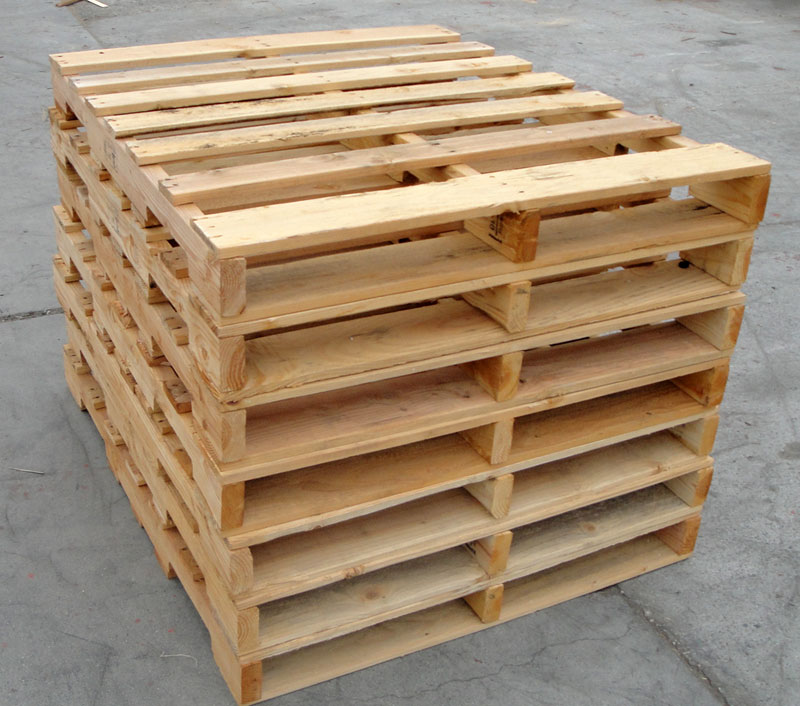
Wooden Pallet Recycling: Fundamental Knowledge To Learn

Pin Box for 5Th Wheel : Upgrade Your Hitch Towing Experience

Hand Truck Vs Dolly: Which One to Choose?

Future Trends in Barcode Scanning Technology

Pallet Inverter Solutions For Efficient Material Handling


